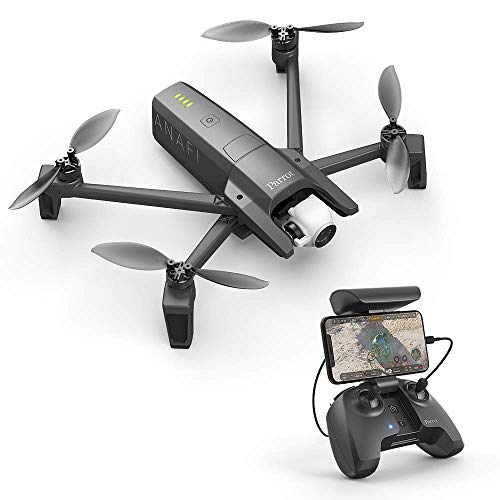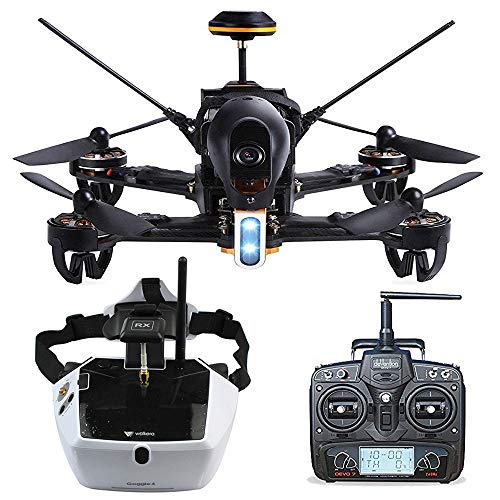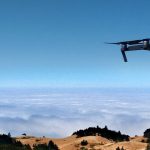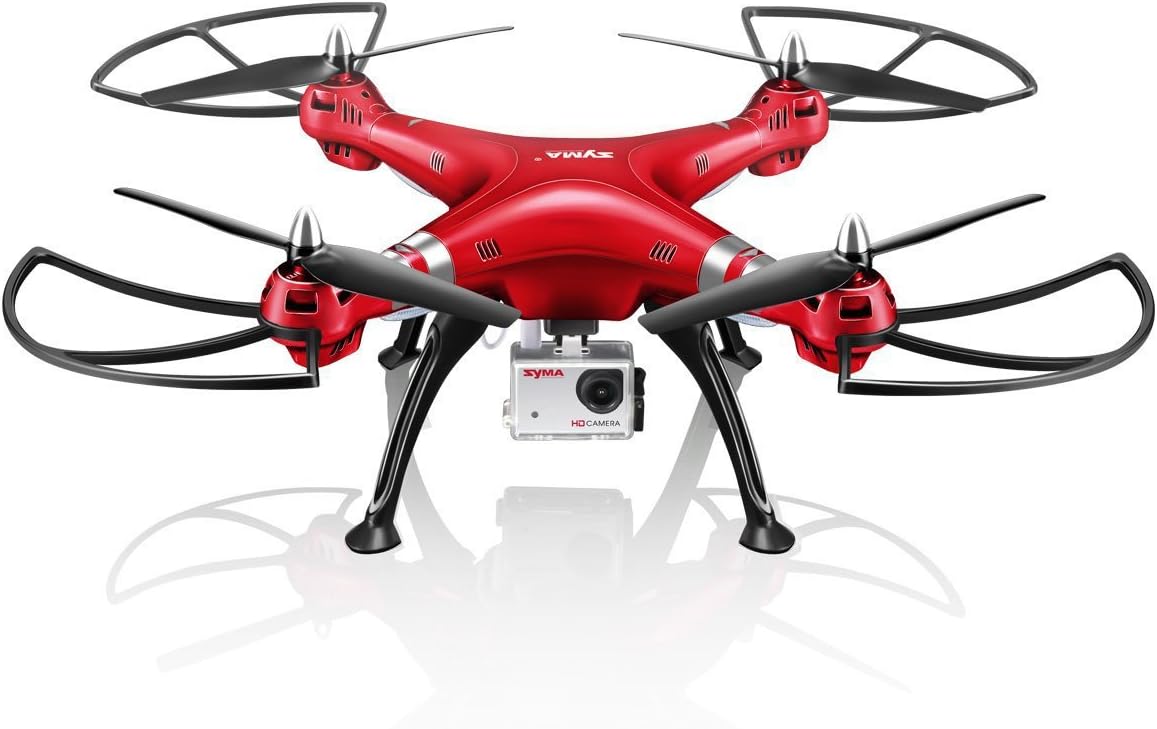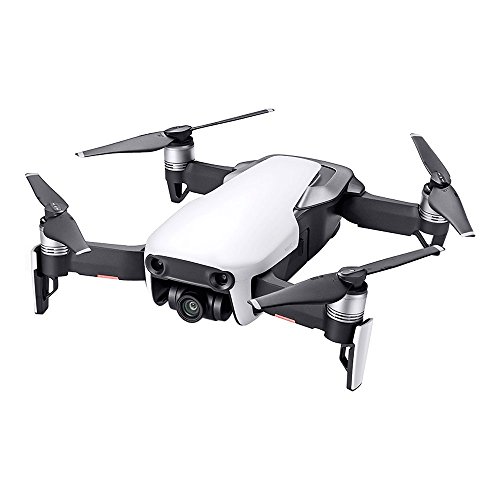Best Drone for Agriculture

Embark on a journey into the world of agriculture drones as we unveil our top pick, the DJI Agras MG-1. Renowned for its user-friendly design and exceptional price-to-performance value, this drone stands as a prime choice for agricultural endeavors. Stay tuned to discover our alternative recommendations for agriculture drones and explore the realm of gas-powered options tailored for professionals.
The Best Agriculture Drones for 2024:
Best Drone for Agriculture: DJI Agras MG-1
The DJI Agras MG-1 is an octacopter type of drone that flies very fast and picks up information about the land swiftly. It is effortless to control and it comes with its exclusive 5-Spectrum sensor, flight planning, flight management and an image processing software in order to make the workflow between the tractor and drone fluid. Calibrating the settings in order for the DJI Agras MG-1 to be familiar with the land is easy with its surveying software too. Above all, it can capture data of up to 500 acres. Octacopter drones are a blast especially for agriculture, especially if it is the DJI Agras MG-1.
Best Agriculture Drone: Parrot Scorpion
- 1 Parrot Bluegrass
- 1 Parrot Sequoia
- 3 Batteries
- 1 Skycontroller 2 / 1 Backapck
- 1 Year subscription for Pix4Dag
The Parrot Scorpion comes as a sprayer drone with a fixed wing design. This affordable bundle has gotten quite a reputation as it is affordable while providing numerous reliability for farmers. The Parrot Scorpion is considered one of the best agriculture drones due to its complex and accurate camera as well as capturing images in very pristine ways. Overall, this is a very decent package that you should never miss out on, especially if you prefer a fixed wing type drone.
Best Scouting Drone for Agriculture: DJI Smarter Farming Package
- Camera with 1-inch 20MP sensor the...
- Five-directions of obstacle sensing
- Remote controller with built-in screen...
- Mobile App: DJI GO 4. It will not work...
It is quite amazing how DJI provides a lot of bundles for agricultural purposes but if you want the best surveying drone bundle, it is the DJI Smarter Farming Package that you want. Unlike the PrecisionHawk bundle, this combination includes a DJI warranty just in case something happens to your drone. The package uses the same DJI Phantom 4 Pro (check out the rest of the review here) but with a Sentera NDVI upgrade. It is quite an amazing deal plus it does not cost a fortune to buy. In fact, it is best for starters too since you have most of what you need to get your surveying started in a matter of a few hours. are enough to cover acres of the land you are advertising.
Best 4K Drone Sensor for Agriculture: DJI Agras T16
- The T16 can spray up to 10 hectares per...
- Doubled Efficiency and Control Range...
- FPV Camera Safety with Vision
- The T16 is equipped with the RTK+GNSS...
- The T16 has a maximum flight altitude of...
While it may cost quite a lot, the DJI Agras T16 is a great investment if you need the most accurate data gathering via sensors. Its 4K camera can spot data within just a few seconds under acres upon acres of land. The most unique feature about the DJI Agras T16 is that it can live stream the data directly to you. Whether it’s crop health, the number of crops, humidity or anything that you input that is relevant to your business, the DJI Agras T16 can get it done without any problems. You know what they say, “It pays for itself.”
Best Spraying Drone for Agriculture: Flydragon Agricultural Drone
- agricultural drone sprayer UAV, farm...
The Flydragon Agricultural Drone is the most complete drone experience for agriculture. It holds multiple aerial sensors and is considered the smartest drone for the field. The Flydragon Agricultural Drone carries around a sensor that measures humidity, air pressure, and temperature and sends the data to you in merely a few milliseconds. It also has an anti-crash mechanism should you happen to get clumsy over the controls. Its AI is reliable enough to let it do all the hardwork for yourself in terms of data. Best of all, controlling the drone manually is so easy to do, which is why a lot of people in the agricultural business invest in the Flydragon Agricultural Drone.
Conclusion (Why I Would Buy It)
Without a doubt, the DJI Agras MG-1 is what I would choose for the best drone for agriculture because of the value it delivers for its price. It is sufficient to help in your professional, agricultural and real estate business whether you are still inexperienced or an expert. Need an affordarble fixed wing drone? The Parrot Scorpion suits you. If you prefer a bundle that includes a good rotor drone such as the DJI Phantom 4 Pro, you should consider getting the DJI Smarter Farming Package. But if what you seek is a rotor drone with amazing 4K sensors, the DJI Agras T16 is a sure buy. And when you need the best fixed wing drone in the business, consider buying the Flydragon Agricultural Droneon.
Agriculture Drone Buying Guide
Image Processing
One of the most vital components when surveying is image processing. Of course, you want to get a good look at the acres that your drone captured so it is always best to buy a UAV with 4K sensors. Then again, most drones have that, however, some of the much cheaper ones can only do 720p images but that is okay too.
Fixed Wing or Rotor
Perhaps one of the most subjective topics, it all depends on how many acres of land you have. If it is wide at around 300 acres or more, your obvious choice is a fixed wing drone - which cost much more by the way. But if you have a smaller lot or you have a decent patch of land that isn’t industrial-sized, a rotor drone should suffice.
DJI vs Others
As you can see from this list, I recommended the bundles that include the DJI Phantom 4 Pro above all else. This is because not only is the Phantom an amazing commercial product for everyday users, it is also capable of capturing images in high details. It is also modifiable in order to make it more agriculture-focused.
Software
Usually, when you buy an agricultural drone, it already includes a software. However, should there be none provided, the most crucial software you need to get are Pix4D, PrecisionMapper, DataMapper, and Correlator3D.
Unlike consumer-based drones, agricultural drones may cost from $2000 up to $25,000 and more. This is because they are more focused on industrial purposes and have built-in exclusive features specially made for data gathering and analytics.
Drones have become essential in agriculture since they help the farmers gather more useful information about the water, fertilizer, seeds, crops, and more. Drones give the farmers a better view (both figuratively and literally) of their resources in order to utilize and expend more wisely.
According to the Munich Reinsurance America, Inc. survey, “Munich surveyed 269 farmers for input on how farmers are using or viewing drones. Most of the farmers surveyed have concerns related to drone usage (76 percent). Privacy issues, at 23 percent, was the most common concern held among farmers, followed by cyber security concerns with data captured via drone (20 percent) and then the possibility of injury or damage from the drone (17 percent).”
Depending on the type of drone that you are using, a high-speed fixed wing drone can cover as many as 100 to 500 acres. Rotor drones are slower but are more focused on smaller acres. Acre coverage also depends on the drone speed. The faster, the more land coverage.








